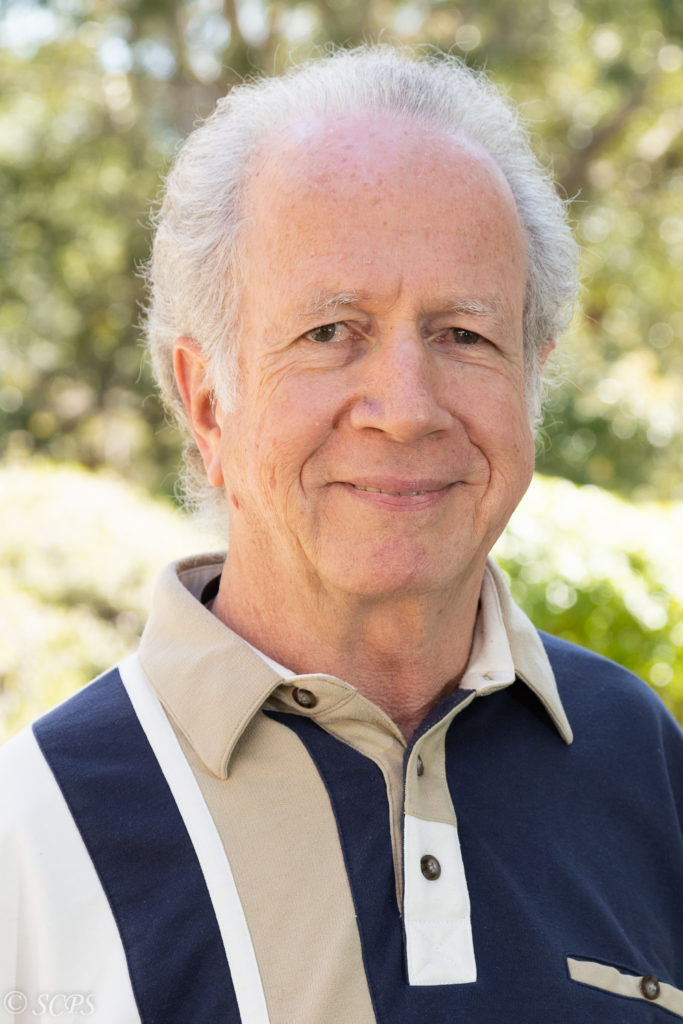Tracing a journey from incoherent digital holograms to non-invasive imaging through scattering media
“Understanding the world around us begins with observation, and imaging is one of the main observation tools. The main goal of the research is to develop new systems that have superior imaging capabilities over existing systems. The properties that can be improved are the image resolving power, the immunity from inherent noise, the capability to see through scattering media and observe four-dimensional scenes (three dimensions of space plus the fourth spectral dimension).”

“My research started in a biology laboratory so the main goal was improved microscopy – biologists want to see a sample with maximum details in the particles. The product is a microscope with better and more dimensions and resolution at a reasonable cost. Microscopes where you can add more and more dimensions depending on the research field,” said STIAS fellow Joseph Rosen of the School of Electrical and Computer Engineering, Ben-Gurion University of the Negev.
“But beyond microscopy the new imaging models can be applied in devices like telescopes, endoscopes and other imaging systems. The research therefore contributes to many different scientific fields like biology, biomedicine, material science and astronomy.”
Rosen started by pointing to some highlights in the history of photography and imaging, showing some of the earliest surviving images captured on camera including one from 1825 by Joseph Nicéphore Niépce, a French inventor, usually credited as the inventor of photography, in which the exposure took eight hours, to a shot of the Boulevard du Temple in Paris taken in 1838 by Louis Daguerre, a French artist and photographer, recognised for his invention of the daguerreotype process of photography, which was the first shot with living humans and had an exposure time of five minutes.
By the 20th century rolls of photographic film were available, by 1975 Kodak had developed a prototype digital camera, Fuji Film developed a memory card by 1988 which meant that light could be converted to digital signals and transferred to memory, and from 2000 smart phones were introduced with cameras containing built-in digital processors.
Rosen also highlighted the work of British scientist Thomas Young, specifically Young’s interference or double-slit experiment performed in 1803 which, along with the work of Augustin-Jean Fresnel a French civil engineer and physicist, led to acceptance of the wave theory of light and increased understanding of interference.
“This work showed that light is a wave and that waves combine into an interference pattern with zones of destructive and constructive interference,” said Rosen. “Two light waves therefore either cancel each other out leading to darkness or combine to double the brightness.”
Ever-sharper images
Rosen explained that although optical imaging has been well-known in nature and technology for decades, new methods of optical imaging assisted by computational imaging techniques have moved the field forward considerably.
His work is based on wave interference and digital holography. Holography is a technique dating to the 1940s (resulting in the 1971 Nobel Prize in Physics for the Hungarian-British physicist Dennis Gabor) that enables the generation of three dimensional (3D) images by superimposing one wave front (the reference beam) on another thereby generating an interference pattern which is recorded on a physical medium. The ability to generate a 3D image makes holography an obvious choice for fluorescence microscopic imaging, however, problems of incoherence, speed and lack of detail first had to be overcome.
Rosen traced his 15-year journey from slightly incoherent images to ever-increasing detail and clarity highlighting landmarks in the development of the techniques from Fresnel Incoherent Correlation Holography (FINCH) to interferenceless Coded Aperture Correlation Holography (COACH).
In 2007 he and his colleagues developed the first motionless holographic fluorescence microscopy system (FINCHSCOPE) based on FINCH, and used it to record high-resolution 3D fluorescent images of biological specimens without the need for scanning.
“By 2011 we had discovered, almost by accident, that FINCH gives better resolution (an increase of 50%) compared to regular imaging systems,” he said. “This is beyond the Rayleigh limit and is a unique improvement. It was the by-product of the initial project – two finches with one beam!”
They showed that FINCH could enable holograms to be recorded with just a digital camera and spatial light modulator resulting in improved resolution compared to conventional imaging.
Acquiring three holograms was enough to reconstruct an entire 3D scene. FINCH also increased temporal resolution with an exposure time that could be in milliseconds – longer than conventional microscopy but allowing 3D in one shot as well as the possibility to do slicing.
By 2013 they had built a new fluorescence microscope with increased efficiency, which used two cameras, one for a conventional widefield microscope and the other for FINCH, allowing the comparison between the two microscopes. Years later, this combination was developed and manufactured by Celloptic Inc as Widefield, Confocal, FINCH, and Confocal-FINCH microscopes all in one device.
Greater and greater detail
In 2017 the work changed direction to I-COACH – an Interferenceless Coded Aperture Corrected Hologram which makes possible non-invasive imaging through the use of a scattering medium making it ideal for use in living tissue. In I-COACH, the light scattered from an object is modulated by the use of a coded phase mask and then recorded by a digital camera as a hologram.
“Both FINCH and COACH are methods for recording digital holograms of a 3D scene,” explained Rosen. “However, COACH can also be used for other incoherent and coherent optical applications.”
Summarising his overall conclusions from this research journey, Rosen pointed out that “Inventions can come about by unexpected combinations of both well-known and unexpected ideas. It’s essential to read other studies from many fields and to stay open minded to new ideas. You also need to support and attract good students and collaborators to increase scientific dialogue within a field.”
Michelle Galloway: Part-time media officer at STIAS
Photograph: Anton Jordaan
